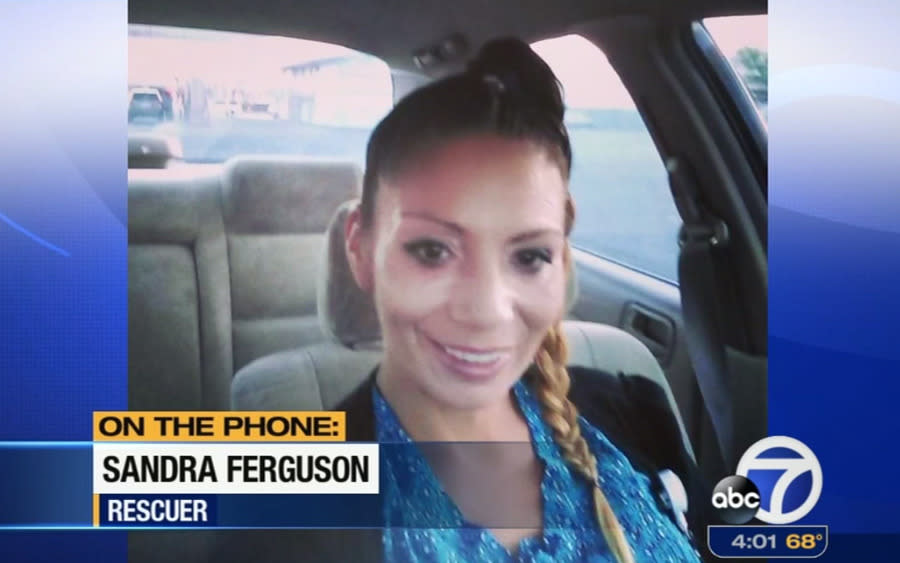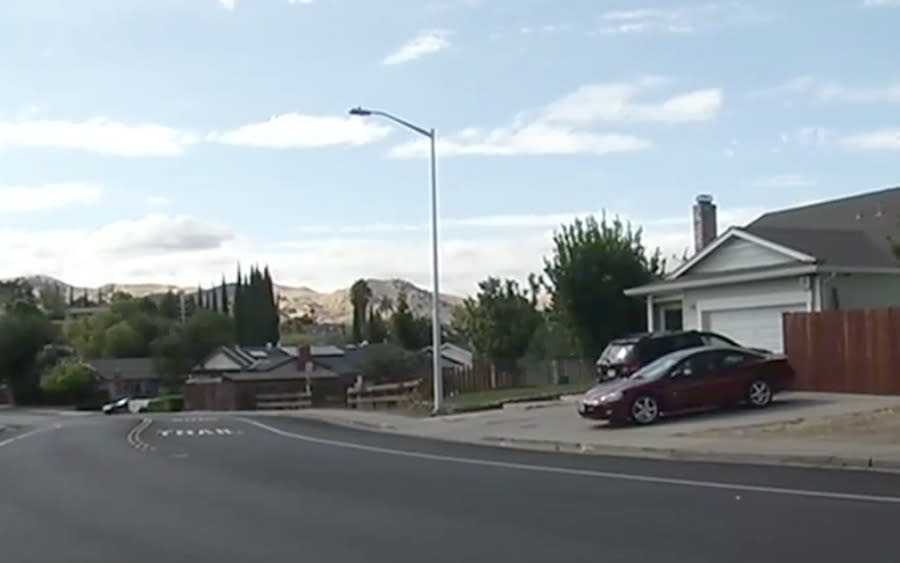Teacher’s Aide Foils Kidnapping of 11-Year-Old Girl Near School

Walking to school, an 11-year-old girl was snatched off the street in a shocking alleged kidnapping attempt that a teacher’s aide boldly ended as quickly as it began.
STORY: Hero Pizza Shop Staffer Saves Kidnapped 7-Year-Old During Smoke Break
The girl, who was strolling en route to Sutter Elementary School in Antioch, Calif., was reportedly lured by 51-year-old Santiago Salazar to the passenger-side door of his car on Friday around 7:30 a.m. Police report that the man then grabbed her by the wrist and pulled her into his vehicle. Yet when Sandra Ferguson, a teacher’s aide at Sutter Elementary (shown in the photo above), spotted her former student sitting in the front seat of the car, the educator immediately noticed something was wrong because the girl looked scared. Ferguson told ABC 7 News that she then drove up close to the car to investigate. “I said, ‘Sweetheart, is that your dad?’ She said, 'No, he’s a friend.’ I said, 'No, he’s not your friend,’” Ferguson recalled. “I put my car in front of his and blocked him in. I told her, 'You get out of that truck right now!’”
STORY: Parents and Video Prankster Lure Teens on Facebook for Scary Lesson

An 11-year-old girl was nearly kidnapped walking to school in Antioch, Calif., on this street Friday. (Photo: ABC 7 News)
Ferguson called police, who arrested Salazar on the spot and charged him with suspicion of kidnapping. “It was kind of like a superwoman power thing,” Ferguson said of the incident. “I can’t believe I did that.” But many, including Sutter Elementary School principal Debra Harrington, are grateful that she did. “She was a guardian angel,” Harrington told ABC 7 News. “[She prevented] something terrible from happening.”
It doesn’t take superhero skills to prevent such scary situations from becoming tragedies, though. Michelle Boykins, senior director of communications at the National Crime Prevention Council, tells Yahoo Parenting there are three easy ways to update those old “stranger danger” warnings and teach kids today how to protect themselves anytime, anywhere.
Talk through scenarios starting when children are young
“‘Stranger danger’ is a misnomer because more often than not, kids are abducted by people that they know in some way, be it a neighbor or someone that they’ve seen in and around school,” says Boykins. “So instead we want to teach kids about the different scenarios that could be dangerous.” Kids, she explains, can be easily lured to someone who says, “Can you help me find my lost puppy?” because “they want to be helpful and believe someone who makes it look like he or she is really scared.” The ideas parents really want to hammer home as early as they can are: Don’t get too close to cars, there’s safety in numbers so walk places with other friends, and that it’s OK to say no to an adult who is asking you to do something that your gut says isn’t right.
“Parents should seize every opportunity for what we call, ‘teachable moments,’” says Boykins. “At the park, you say, ‘What would you do if someone came up to you and asked you to go with them to help them do something? And if they say, ‘I’m mommy’s friend and she told me to come get you?’ You actually walk through different safety scenarios with them.” Parents, after all, teach kids bike safety and how to correctly cross the street. “This is just one more thing that you can educate them on to help them grow into a well-adjusted, safe adult.”
Create, and use, a code word
Beginning at school age, pick a special “code word” that everyone in the family can use if there is an instance when mom, dad, or a caregiver can’t pick up the child for some reason so that he or she knows they can go somewhere with someone else, advises Boykins. “That’s the age when they might be invited for play dates at a park or at a friend’s house — and those are the moments in which you want them to be situationally aware,” she explains. “You don’t want to scare children and make them think that everyone out there is dangerous and bad, but you need them to know that not everyone has their best interests at heart, even if they look like they do.”
With a code word, kids know for sure if they can travel with someone. “And they learn that if someone doesn’t have it and tries to take them somewhere,” she continues, “they need to start yelling and screaming out that someone is trying to harm them so they can get help.”
Test older kids on their safety smarts
“Some parents go so far as enlisting their adult friends to show teachable moments in action and actually approach their child to see what happens if a person without the code word tries to lure the kid somewhere,” says Boykins. “Often, parents say, ‘My kids would never do that,’ but put to the test, the mothers and fathers find out that their kids would go off with someone.” The expert advises waiting until at least fifth grade before conducting such an experiment but notes that it’s important to try — then talk about it with the kids afterward. “Around fifth grade is when kids are starting to go off bike riding with friends, and you can’t always see what’s happening in their world and how they react to things,” she explains. “You want to spend more time talking with them about safety at this point so that if a situation arises they’ll remember the steps you’ve talked about and they’ll know what to do.”
Please follow @YahooParenting on Facebook, Twitter, Instagram, and Pinterest. Have an interesting story to share about your family? Email us at YParenting (at) Yahoo.com.
(Top photo: ABC 7 News)

